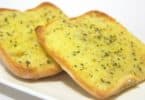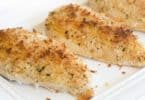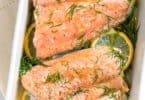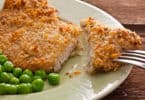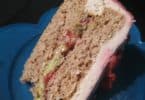Everyone has stories about how dry the Thanksgiving turkey was at a relative’s house. When baked improperly, a turkey can be one of the driest kinds of meat available. Baking a turkey presents several problems that have to be overcome in order to create a moist, succulent, and flavorful bird that you would be proud to serve to your guests for any occasion. With a few special techniques and tips, a dry turkey will soon be a distant memory.
One of the biggest problems with baking a turkey that can cause it to be dry is the sheer size of the bird. Turkeys can range in size from under 10 pounds to close to 30 pounds. Turkeys that are on the upper end of the size range are difficult to cook to a safe temperature while maintaining moisture. Turkey needs to be cooked to an internal temperature of 165 in the breast and 170 in the thigh and leg joint to kill any bacteria. Invariably, the turkey breast will get dry while the thigh meat is still raw. The best option to solve this problem is to buy two smaller turkeys instead of one big one. The will cook in less time and be more manageable in terms achieving proper temperatures for food safety.
The part of the turkey that has the most meat is also the part that is in the most danger of drying out — the turkey breast. The turkey breast is made up of white meat, which does not have a lot of intramuscular fat like the thigh and legs. Fat provides moisture to meat as it is rendered out during the cooking process. In fact, once the skin is removed, turkey breast is nearly 99% fat free. With such a little fat content, it is no wonder that the breast is easy to overcook and dry out. To combat this, moisture needs to be added in the form of a brine. A brine is a mixture of salt and water that works by the principle of osmosis. Osmosis is a chemical process in which substances flow from areas of high concentration to areas of low concentration. In this case, the high concentration of salt and water ( i.e. moisture) flows into the turkey, which has a low concentration of the two substances. A brine is made by mixing 3/4 cup of water for every one gallon of water, bringing it to a boil, and then cooling the mixture to room temperature. Enough brine should be made in the proper ratio to submerge the bird. Flavorings may also be added to the brine in the form of herbs and spices. As far as what herbs and spices should be included, use your imagination and let your palette be your guide. Flavorings like thyme and sage go well with turkey. A whole turkey needs to be brined in the refrigerator for 24 hours.
Once the turkey has been brined, it needs to be rinsed off and patted dry. Next, transfer the bird to a roasting pan and let it come to room temperature for about 30 minutes. This will ensure even cooking. In the meantime, heat the oven to 350 degrees. Once the oven is preheated and the turkey at room temperature, you are presented with another opportunity to add flavor and moisture by rubbing the turkey with butter over the whole bird and underneath the skin. Turkey is now ready to be baked in the oven. The turkey should be roasted until the internal temperature in the thigh and leg join reaches 170 degrees. Once the temperature has been reached, remove the turkey from the oven and let it rest for at least 45 minutes until carving so that the juices remain in the bird instead of rushing out onto the cutting board.
By brining a turkey and adding butter under the skin, a dry, baked turkey will be a thing of the past.
<>


